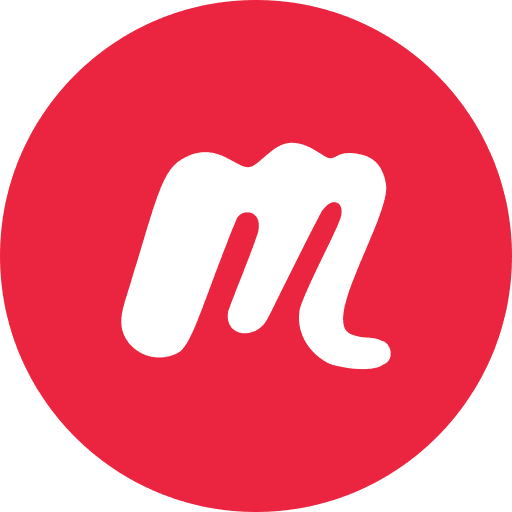ComfortConnect: Enhancing Social Connections Through Event Planning
ComfortConnect is an online commerce platform where users can purchase event tickets and meet new friends. The platform aims to improve event attendance by providing better communication and incentives for users to follow through with their RSVP commitments.

Date
September 2023
1 Week
Project Type
Individual student project at Springboard
Roles
User research & User interface design
Applications Used

Project Overview
ComfortConnect is an innovative online commerce platform that allows users to purchase event tickets while also fostering social connections. Designed to enhance event attendance and engagement, ComfortConnect provides users with a streamlined way to discover, RSVP, and connect with others who share similar interests.
The ComfortConnect business team has identified a significant issue: only 20% of users who indicate they will attend an event actually show up. This discrepancy suggests that users may not be receiving effective communication about upcoming events and may lack sufficient motivation to follow through with their plans. Our goal is to design solutions that improve event attendance and create a more engaging and rewarding experience for users.
Problem Statement
Many users who express interest in attending events on ComfortConnect do not ultimately participate, leading to low engagement and missed opportunities for meaningful connections. This issue is likely due to ineffective event communication and a lack of incentives to encourage attendance. To address this challenge, ComfortConnect needs a system that enhances event reminders, strengthens community interaction, and provides incentives that make attending events more appealing.
Design Process
Discover
Competitive Analysis
User Interviews
Persona Building
Design
User Flows
Low Fidelity Wireframes
Prototyping
Validation
Interviews
User Testing
Research & Discovery
To kick off the discovery phase, we conducted a competitive analysis to identify key players in the event ticketing and social networking space: Meetup, Groupon, and Eventbrite. Through a SWOT analysis, we evaluated each competitor's strengths, weaknesses, opportunities, and threats. This analysis helped us understand industry standards, identify gaps in existing solutions, and uncover unique opportunities for ComfortConnect to differentiate itself and provide a more engaging event experience.
Competitive Analysis
To kick off the discovery phase, we conducted a competitive analysis to identify key players in the event ticketing and social networking space: Meetup, Groupon, and Eventbrite. Through a SWOT analysis, we evaluated each competitor's strengths, weaknesses, opportunities, and threats. This analysis helped us understand industry standards, identify gaps in existing solutions, and uncover unique opportunities for ComfortConnect to differentiate itself and provide a more engaging event experience.

Meetup
Strengths
Strong brand recognition as a well-established platform for community-driven events.
Highly customizable group settings allow organizers to curate events tailored to specific interests.
Wide variety of event categories, including tech meetups, fitness groups, social gatherings, and business networking.
Subscription-based model for organizers provides a steady revenue stream.
SEO optimization and event discovery features help users find relevant meetups easily.
Weaknesses
Limited event verification—some events may be low quality or inconsistently managed.
High dependency on organizers, leading to varying levels of engagement and event success.
Lack of integrated ticketing options—most events require third-party platforms for paid entry.
Minimal gamification or incentives for users to attend events after RSVPing.
Opportunities
Enhanced event reminders and follow-ups to increase attendance rates.
Partnerships with local businesses to offer exclusive discounts or perks for attendees.
Improved engagement features, such as chat forums and interactive event content.
Integration of hybrid and virtual event tools to expand beyond in-person gatherings.
Threats
Growing competition from larger platforms like Eventbrite and Facebook Events.
User retention challenges—once users find a niche group, they may disengage from the broader platform.
Potential organizer dissatisfaction due to subscription costs and limited marketing tools.

Groupon
Strengths
Strong brand recognition and extensive marketing reach.
Discounted event pricing attracts budget-conscious consumers.
Offers a wide variety of events, experiences, and deals, appealing to different audiences.
Established partnerships with local businesses and event organizers.
Weaknesses
Focus on discounts may devalue events, leading to lower perceived quality.
Limited community engagement—users do not interact beyond purchasing tickets.
High merchant fees and commission rates, which may deter event organizers.
Opportunities
Expansion of exclusive, high-quality events rather than just discount-based deals.
Improved personalized recommendations to match users with events they are likely to attend.
Loyalty or rewards programs to encourage repeat users.
Threats
Competitors with stronger social networking features (e.g., Meetup and Eventbrite) may attract more engaged users.
Merchant dissatisfaction due to high commission fees could reduce event availability.

Eventbrite
Strengths
Industry leader in event ticketing with a large, diverse user base.
Easy-to-use platform for event creation and management.
Robust analytics and marketing tools for event organizers.
Seamless integration with third-party apps and social media for promotions.
Weaknesses
Limited social interaction features—users primarily buy tickets but do not engage with each other.
Service fees on tickets can be high, discouraging some users and organizers.
Less focus on community-building, unlike Meetup, which fosters ongoing group engagement.
Opportunities
Addition of social networking elements to enhance engagement before and after events.
Expansion into virtual and hybrid events to increase accessibility.
Offering more personalized event recommendations based on user interests and behavior.
Threats
Competition from socially-driven event platforms that emphasize networking and interaction.
Rising advertising costs could impact marketing effectiveness.
User Interviews & Key Insights
To determine which features would benefit our users the most, we conducted interviews with five individuals, focusing on three main areas:
Friendship & Social Anxiety – We aimed to understand how people make friends and whether social anxiety affects their ability to form new connections.
Impact of the Pandemic – Given the recent pandemic, we explored how it has influenced social skills and willingness to attend events.
Event Preferences & Incentives – We inquired about the types of events participants enjoy and whether monetary prizes or other incentives would influence their attendance.
Key Insights
After analyzing the responses, we identified several recurring themes:
Pandemic Impact on Social Skills – Many participants noted that the pandemic negatively affected their communication skills, making social interactions more challenging.
Friends as Event Gateways – Participants commonly attended events after receiving invitations from friends or acquaintances.
Preference for In-Person Connections – Most participants preferred making friends in person, often through mutual connections.
Group Settings Enhance Socialization – Some participants felt more comfortable meeting new people in a group setting rather than one-on-one.
Monetary Incentives as Motivation – Many participants were more likely to attend events if there was a financial incentive or reward.
Meeting New People Through Outings – Most participants met new friends while going out or traveling, rather than through online interactions alone.
Personas
Following our user interviews, we developed two personas—Vincent Stanley and Allie Thorton—based on the insights gathered from participants.
Vincent Stanley is an introvert who enjoys spending time at home and socializing with friends online. However, he wants to step out of his comfort zone and engage in more in-person social activities.
Allie Thorton is a career-driven individual who struggles to make new friends due to her busy schedule and niche interests.
These personas help us better understand the diverse needs of potential users and provide a foundation for designing features that cater to their social habits and challenges.
User Flows
UI Design Kit
Before transitioning to the design phase, we developed a UI design kit to establish a cohesive visual language for ComfortConnect. This kit includes essential design elements such as buttons, icons, input fields, typography, and color schemes. Our design choices were influenced by competitor analysis and similar platforms to ensure familiarity and usability.
Since the UI kit serves as the foundation for our wireframes and will be applied consistently throughout the project, we focused on optimizing readability and accessibility. Ensuring that colors, text, and icons are clear and user-friendly was a top priority in this stage.
Design
Low Fidelity Wireframes
With all the necessary information gathered, we began creating low-fidelity wireframes for ComfortConnect. This step involved building a structural foundation—a basic blueprint of the website and application layout. The wireframes focused on the placement of key features and essential functionalities without incorporating images or colors.
The goal of these wireframes was to establish a clear and organized layout, ensuring intuitive navigation and usability. Below are examples of the pages we designed in this stage, including the homepage, event information page, and the ThriveTracker.






Updating the Design Kit
With all the necessary information gathered, we began creating low-fidelity wireframes for ComfortConnect. This step involved building a structural foundation—a basic blueprint of the website and application layout. The wireframes focused on the placement of key features and essential functionalities without incorporating images or colors.
The goal of these wireframes was to establish a clear and organized layout, ensuring intuitive navigation and usability. Below are examples of the pages we designed in this stage, including the homepage, event information page, and the ThriveTracker.
Homepage
Event Page
ThriveTracker
User Testing & Key Insights
Following the completion of the low-fidelity wireframes and the integration of the design kit, we proceeded with user testing. We conducted usability testing with the same five participants from our initial user interviews. The goal was to observe how users navigated the platform, identify any confusing UI elements, and gather feedback to refine our high-fidelity wireframes.
During the testing process, participants were assigned specific tasks to complete, allowing us to assess the usability and effectiveness of the interface. Based on their reactions and feedback, we identified several key areas for improvement:
Inconsistent Button Design
Some buttons had variations in size and color across different sections, leading to user confusion. To enhance consistency, button styles needed to be standardized throughout the application.
Lack of Visual Appeal
Users felt that the interface lacked personality, with minimal illustrations and an overly plain white background. Incorporating a more diverse color palette and engaging visuals could improve the overall aesthetic and user experience.
Hard-to-See Progress Tracker
The progress tracker was not easily noticeable, making it difficult for users to track their status. A potential solution is implementing a slide-up tab with a clearly distinguishable background to improve visibility.
Text Readability Issues
Some text was too light, making it difficult to read. While there was a visual hierarchy in certain areas, it was inconsistent across the platform. Adjustments were needed to improve text contrast and maintain a clear information hierarchy.
Refining the Wireframes
After gathering feedback from user testing, we implemented several key changes to improve the overall user experience. These refinements ensured that the application remained engaging, visually appealing, and easy to navigate.
Enhanced Visual Appeal
To address concerns about the interface feeling too plain, we introduced a background gradient, adding depth and personality to the design while keeping it clean and modern.
Improved ThriveTracker Visibility
The ThriveTracker was adjusted to stand out more, making it easier for users to track their progress without confusion.
Standardized Button Design
Button colors and styles were refined to ensure consistency across the application, eliminating any discrepancies that could cause usability issues.
While there were noticeable improvements between the low-fidelity and high-fidelity wireframes, we ensured that the core structure and functionality remained intact. The goal was to enhance the design without making drastic changes that could disrupt the user experience.






Takeaways and Next Steps
Takeaways
This project was an invaluable learning experience, reinforcing the importance of attention to detail in design. Even with a strong understanding of design principles, small oversights can still occur. Throughout the process, I found myself repeatedly refining individual design elements, striving for perfection while balancing efficiency.
One of the key lessons I learned was the significance of seamless navigation in user experience. Every design choice should enhance usability rather than create friction or unnecessary steps in the user flow. Additionally, I gained a deeper appreciation for the balance between perfection and practicality—while refining a feature is important, over-focusing on small details can risk missing deadlines and delaying the overall project.
Beyond design, I also recognized the necessity of aligning our work with business objectives. Our goal wasn’t just to create an enjoyable user experience but also to ensure the product had the potential to drive engagement and revenue for the company.
Next Steps
Enhancing Event Communication – Implement pop-up notifications or alerts to keep users informed about upcoming events.
Providing More Event Details – Expand event descriptions to give users a clearer understanding of what to expect.
Personalized Event Matching – Introduce a feature where users can answer questions about an event to determine if it aligns with their interests.














